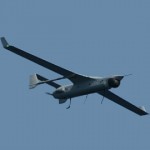 Boeing‘s Insitu subsidiary has received a $21 million order to supply spare and sustainment parts necessary to maintain an RQ-21A Blackjack unmanned aircraft system the U.S. Navy uses in naval special warfare fleet operations.
Boeing‘s Insitu subsidiary has received a $21 million order to supply spare and sustainment parts necessary to maintain an RQ-21A Blackjack unmanned aircraft system the U.S. Navy uses in naval special warfare fleet operations.
Bingen, Washington-based Insitu is scheduled to finish work by June 2018, the Defense Department said Tuesday.
DoD noted approximately $1.4 million of the full obligated amount will expire at the end of the current fiscal year.
An RQ-21A UAS consists of five air vehicles, launch and recovery support equipment and two ground control systems.
The platform is also equipped with an airborne sensor technology designed to help operators collect intelligence, surveillance, and reconnaissance data, acquire targets and relay communications.




